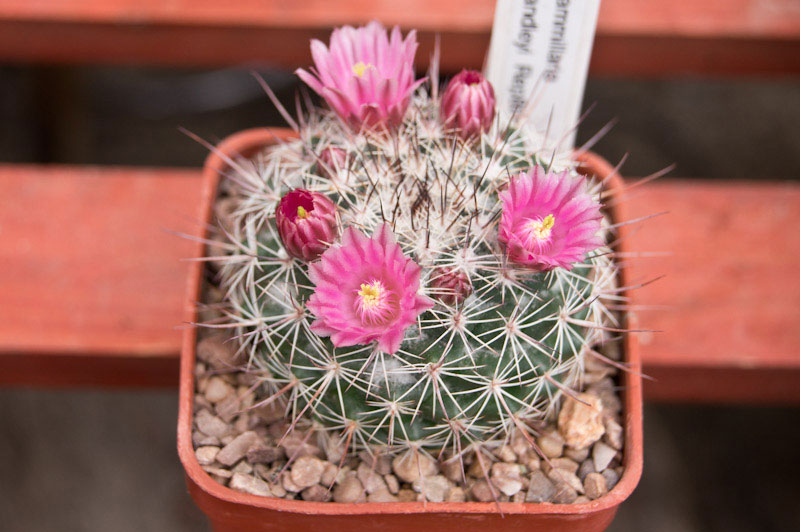
Mammillaria of the Month
(click here for previous Mamms of the Month)
Mammillaria standleyi

Photo: Plant in Cultivation: M.standleyi Rep 809 Copyright: Chris Davies 2011
| A number of newly named species
from the mountains of north west Mexico are allied to Mammillaria
standleyi, so it is only fair to show this species. To make the viewing
nmore interesting, I have shown a form of Mammillaria standleyi
collected by Herr Reppenhagen from near Alamos in Sonora. The form
shown carries the field number Rep 809. It differs from the normal plant in having rather whiter spination, although the flower is very similar, quite large as can be seen. The description calls for a plant that is solitary, but sometimes clustering especially in age, younger axils with white wool, about 16 radial spines, white or tipped brown, and 4 central spines reddish brown, or white tipped with brown. It seems that the spine colour is rather variable. The flowers are purplish-red with green stigma lobes. There are several other species that have been consigned to synonomy with this species, of which the best known is Mammillaria hertrichiana. The variability of this species is wide, and there have been many plants given a variety of names, but since the habitat in which these plants grow are the foothils and rising ground of the Sierra Madre Occidentale on its west facing side in the state of Sonoroa that is perhaps not too surprising. These mountains are often deeply divided by ravines and river beds, and the migration of Mammillarias allied to Mammillaria standleyi has been, and still is, the subject of much debate. However, leaving those issues to the botanists and the better travelled explorers of this delightful region of Mexico, we have a nice plant, relatively easy to cultivate, though as is often the case with larger plants, best grown slowly and retain the typical plant form.
|